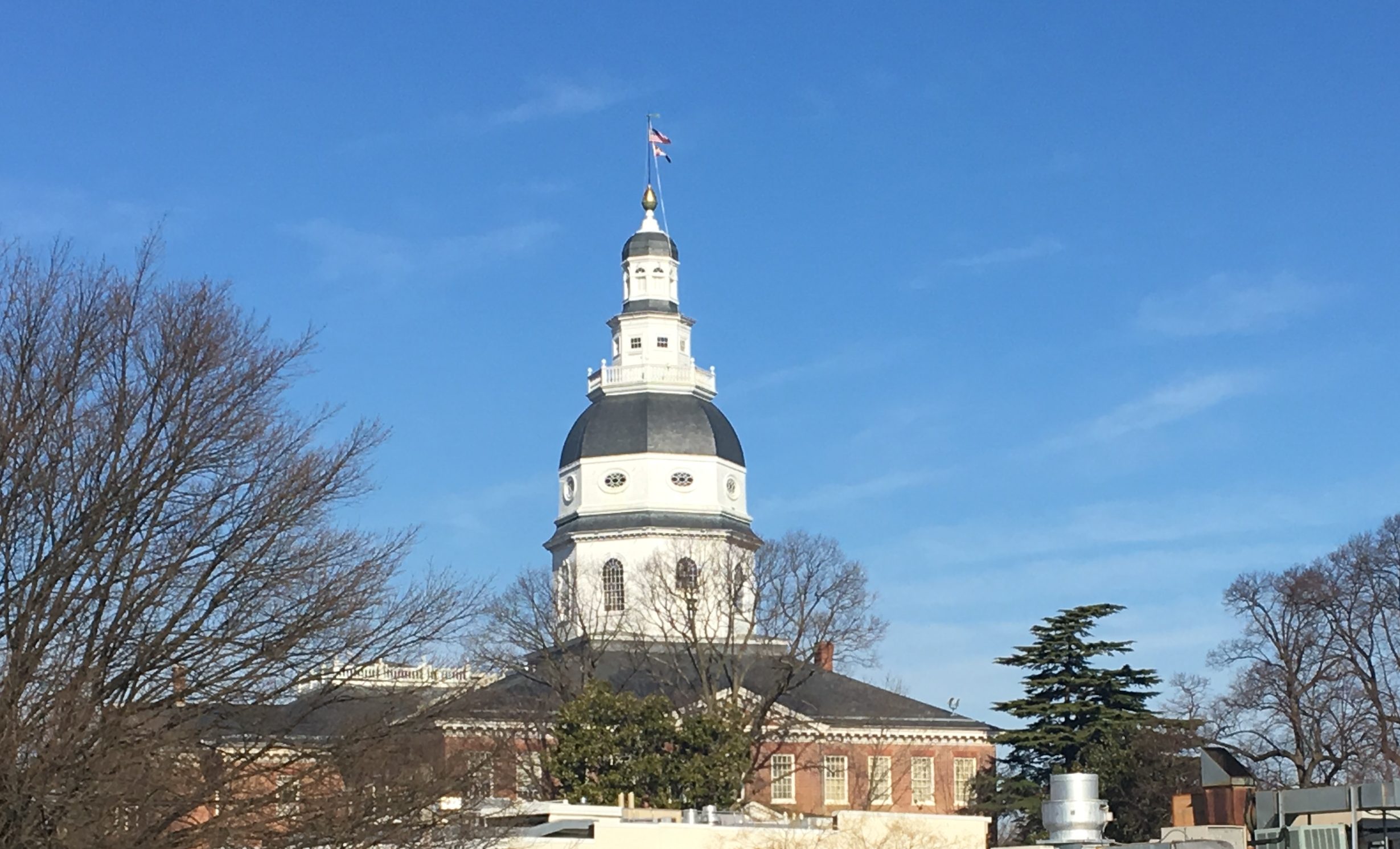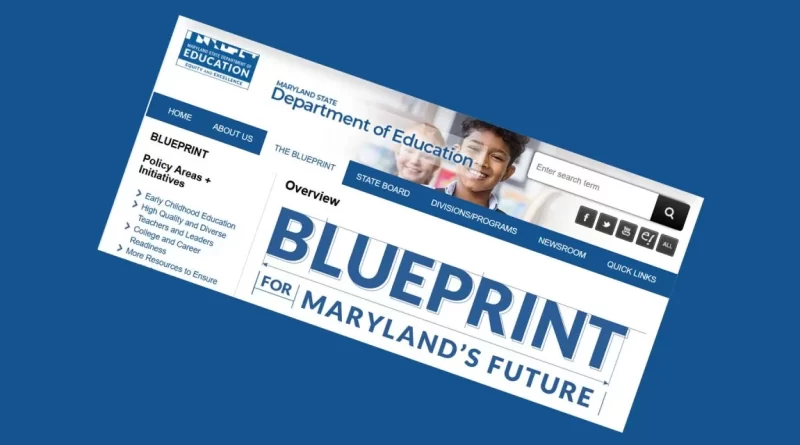‘Unrealistic’ and ‘Unfunded’: Maryland’s Blueprint for education has counties concerned
By OLIVIA BORGULA and OLIVIA YASHAROFF
You might think spending $16.6 billion more in state funds from 2024 through 2029 — and billions more after that — would be enough to give Maryland a world-class education system. But that’s not what many people at the state’s local school districts think.
For proof, look at what local district leaders said in March when they updated state officials on efforts to implement the Blueprint for Maryland’s Future, the state’s landmark effort to rebuild its public schools.
“The funding provided under the Blueprint is not sufficient to meet all of the requirements,” officials in the Baltimore City Public School System wrote.
“Blueprint funding tied to specific programs for expansion requires the elimination of other programs and supports,” the St. Mary’s County Public School System’s report said.
Meanwhile, in Kent County, school officials bemoaned that the district will see increased costs related to staffing, data systems, student support and transportation. “KCPS has found that many of the requirements of the Blueprint come without subsequent funding sources to sufficiently cover full implementation,” district officials wrote.
Created by legislation passed by the General Assembly in 2021, the Blueprint is built on five pillars: expanding pre-K to all 4-year-olds and low-income 3-year-olds, improving the teacher workforce, changing curriculums statewide to prepare students for college and careers, expanding funding and setting up a state agency to oversee it all.
But in those March updates, 15 of the state’s 24 school districts listed funding or resource allocations among the three central challenges they face under the Blueprint.
Meanwhile, some county officials — such as Harford County Executive Bob Cassilly — say the Blueprint is unaffordable.
“Unrealistic state spending mandates for the Blueprint for Education are straining local budgets statewide and should be paused and revisited,” Cassilly said as he unveiled the county’s latest budget April 15.
New mandates
While dramatically boosting state funding for public education over a decade, the Blueprint also asks local school districts — and taxpayers — to do their part. And that is causing some concern among the state’s school principals, said Addie Kaufman, executive director of the Maryland Association of Secondary School Principals.
“In education, one thing that sometimes happens is we get unfunded mandates, and unfunded mandates are very challenging,” Kaufman said at a principals conference late last year.
County leaders find the mandates challenging, too. In a letter to Gov. Wes Moore — a Democrat and strong supporter of the Blueprint — the Maryland Association of Counties last November listed a litany of concerns. They said the Blueprint’s cost estimates don’t take into account the bottom-line local impact of several major spending items, including:
- Construction costs for additional classrooms needed under the plan’s expansion of pre-K.
- Classroom modifications to accommodate instructional changes called for under the Blueprint plan to expand career and technical education.
- Additional staffing for special education students and English language learners.
- The new minimum $60,000 teacher salary starting in 2026 and other efforts to construct a “career ladder” for Maryland teachers.
Noting that local education funding has already reached all-time highs, the Maryland Association of Counties said: “This record county funding, combined with greater funding requirements mandated by the law, will limit counties’ ability to fund competing governmental needs at basic operational levels.”
The Blueprint’s burden on local school districts is only beginning to be felt. By 2034, local school districts will be expected to pay $700 million more annually than they would if the Blueprint hadn’t been adopted, a 2022 state report projected.
“As the Blueprint ramps up and the formulas increase, more and more counties will have to put more funds in because the local share will increase,” said Rachel Hise, executive director of the Blueprint’s Accountability and Implementation Board, the statewide agency created to oversee the Blueprint. “We’re just in the early first couple of years of Blueprint implementation. So it’s only four or five counties that are required to put in more than they have been. But over time, it will be more than half of them.”
Trouble in the counties
To hear county officials tell it, though, the Blueprint’s mandates are already leaving them in a pinch.
When the Blueprint began its rollout, Dorchester County saw a $3 million jump in local funding contributions, according to County Council President Lenny Pfeffer.
“That $3 million jump was devastating to us,” Pfeffer said. “We had to pull from every resource and cut some programs that we wanted to do as far as highway maintenance, bridge maintenance and other things like that.”
Meanwhile in Cecil County, a school funding battle tied in part to the Blueprint led to the creation of a Facebook group — Fund CCPS — with 6,700 members.
Cecil County Executive Danielle Hornberger, a Republican, has refused to meet the school district’s funding request. And last month, Hornberger filed an ethics complaint against Cecil County Schools Superintendent Jeffrey Lawson, accusing him of using public property and funds for political purposes in the budget battle.
“CCPS families deserve better,” Hornberger said.
That prompted an angry response from Allison Stoudt, the Rising Sun High School senior who founded the Fund CCPS Facebook group. Noting that the county has funded local schools “at the legal minimum” for three years running and that its current budget proposal falls $13 million short of the $17 million in additional local aid the district is seeking, Stoudt called Hornberger’s accusation against Lawson “shameful.”
In Worcester County, the county government has similarly refused to increase school funding above the state requirement minimums, leading to a $9 million cash shortfall that could force the district to trim between 90 and 100 staff positions.
“It is WCPS’ belief that drastically cutting instructional staff runs contrary to the spirit of the Blueprint’s goals of continual improvement and transformation in education,” district officials said in their March Blueprint update.
Shifting resources
The Blueprint also calls for shifting resources within school districts at the expense of other schools.
Carroll County Public Schools Superintendent Cynthia McCabe explained the potential ramifications of that change at a public meeting in Sykesville last year.
“What I don’t want to be is a fearmonger, but I also don’t want to get to September of 2024 and have parents calling me saying, ‘Why are the class sizes so much bigger in my child’s school this year?’” McCabe said during the presentation.
The Blueprint shifts funding to higher-need schools in several ways.
The education reform plan provides “concentration of poverty” grants to some schools to bolster support for academics, extracurriculars, and mental and physical health. Grants are given to schools based on the number of students receiving free and reduced-price meals. In this fiscal year, 454 schools in Maryland received concentration of poverty grants, with just over one- fourth given to schools in Baltimore City.
“Especially the community where I serve within my district, they’ve benefited greatly from having concentrations of poverty funding,” said Ashley Moore, principal at the Empowerment Academy, a charter school in Baltimore City.
In addition, a new requirement under the Blueprint requires students who qualify for Medicaid to automatically be enrolled in free and reduced-price school meals.
“This is an improvement from the standpoint of feeding kids,” said Christopher Meyer, a research analyst at the Maryland Center on Economic Policy.
But shifting resources to the schools that need them leads to ramifications elsewhere.
In Baltimore County, for example, average class sizes will go from 25 to 24 in grades 1-3 starting in the fall, but middle school class sizes will grow from 20 to 22 while high school class sizes will increase from 21 to 23.
At a February media briefing, Baltimore County Schools Superintendent Myriam Rogers said elementary school class sizes have been reduced under the Blueprint because making sure students can read by third grade “has been proven time and time again to be an indicator of success.” In addition, she noted that fifth-graders must pass state tests on reading and math.
Asked if the larger class sizes in other grades could negatively impact students, Rogers replied: “No,” saying district officials were being careful in how they were planning to adjust class sizes.
But McCabe, the Carroll County superintendent, reiterated her concern about class-size adjustments called for under the Blueprint.
“We are concerned that very large class sizes will be detrimental to student learning,” McCabe said in an email. “As we are seeing increased mental health concerns in our student population. It is essential that teachers have a manageable class size in order to meet the varied needs of students.”
The future
The Blueprint’s long rollout period — along with the nation’s post-pandemic bout with inflation — could pose other financial concerns to local school districts.
Mapping out the potential district-level impact of the Blueprint in 2022, the Maryland State Department of Legislative Services projected that 15 of the state’s 24 school districts would have to increase local funding levels at some point before the Blueprint rollout is complete in 2034.
“The impacts are not uniform … leading several counties to need to make significant increases in their local appropriation to the boards of education in the early years, later years, or both,” the state report said. “Other county governments are forecast to spend about the same or slightly more than they would have otherwise.”
Of course, inflation could impact those projections. Meyer, the research analyst with the Maryland Center on Economic Policy, noted the Blueprint’s cost projections were made before prices skyrocketed at the tail end of the COVID-19 pandemic.
“Actual costs in the economy have gone way up, but the funding amounts that are required under state law haven’t,” Meyer said.
That being the case, it’s possible that some of the funding requirements in the Blueprint may be changed at some point, either by the Blueprint’s Accountability and Implementation Board or the General Assembly.
“No law is ever perfect,” Maryland Education Coalition co-chair Rick Tyler Jr. said. “We’re still early in the process of what is intended to be a 10-year process.”
Local News Network Director Jerry Zremski contributed to this report.

Capital News Service is a student-powered news organization run by the University of Maryland Philip Merrill College of Journalism. With bureaus in Annapolis and Washington run by professional journalists with decades of experience, they deliver news in multiple formats via partner news organizations and a destination Website.

